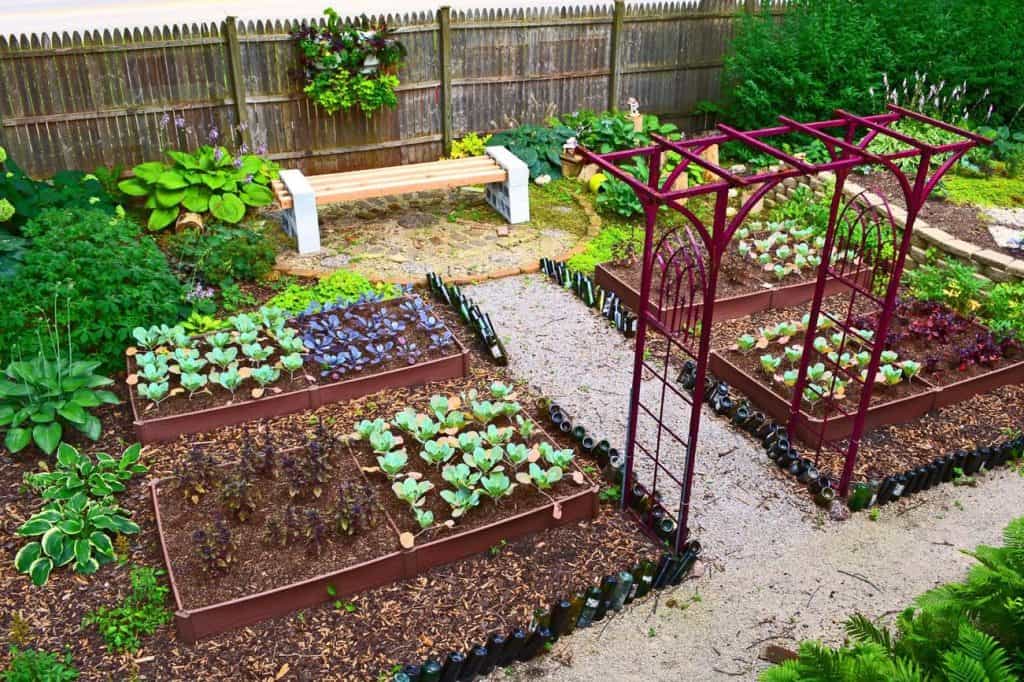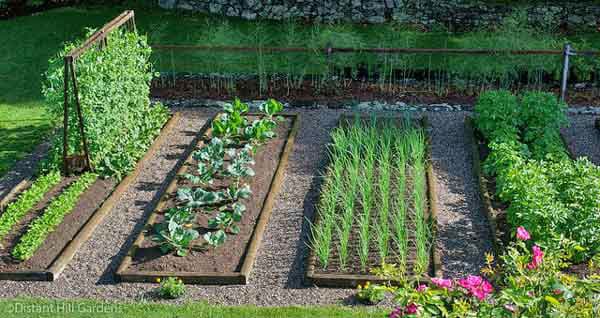
This Vegetable Gardening Guide for Beginners will help you to prepare and grow your tastiest veggies ever. Discover how much food you require to grow to feed a household, leading 10 veggies for a beginner, and more pointers. Why garden, you ask? If you’ve never ever tasted garden-fresh veggies (great deals of people haven’t!), you will be astonished by the sweet, juicy tastes and lively textures. There’s absolutely nothing rather like fresh veggies, particularly if you grow them yourself– which you can!
On this page, we’ll highlight the basics of vegetable gardening and planning: how to choose the ideal website for your garden, how to produce the ideal size garden, and how to select which vegetables to grow.
Select the Right Location
Picking an excellent location for your garden is absolutely essential. A mediocre place can result in crappy veggies!
- Plant in a sunny area. A lot of veggies require at least 6 hours of direct sunshine each day. There are a couple of veggies that will tolerate some shade.
- Plant in moist, well-drained soil. If you have actually poorly drained soil (water pools), plant veggies in a raised bed. If you have rocky soil, till and get rid of the rocks.
- Plant in a stable environment. Avoid places that receive strong winds could overturn your young plants or keep pollinators from doing their job. Nor do you want to plant in a place that gets excessive foot traffic or floods quickly. Plant in an area that would make Goldilocks proud.
Selecting a Plot Size: Start Small!
Keep in mind: It’s better to be pleased with a little garden than being frustrated by a big one!
One of the most typical mistakes that newbies make is planting too much too soon– way more than any person could ever eat or want! Unless you wish to have zucchini settling in your attic, plan your garden with care. Start little, and only grow what you understand you’ll eat.
Here are some tips for a good-size newbie veggie garden that can feed a household of four for one summertime, with a little leftover for canning and freezing (or handing out to jealous next-door neighbors).
- Make your garden 11 rows broad, with each row 10 feet long. The rows must run north and south to maximize the sun.
- Ensure that you have paths that allow you to access your plants to weed and harvest. The general guideline is: Don’t enable more than four feet of plants without access to them. Simply make sure that you can reach the center of the row or bed quickly.

Picking Vegetables!
The veggies suggested listed below prevail, efficient plants that are fairly simple to grow. It would be a good idea to call your state’s Cooperative Extension Service to find out what plants grow best in your area.
Leading Ten Vegetables
( Tip: Click on a vegetable’s name to see its detailed Growing Guide.).
- Tomatoes.
- Zucchini squash.
- Peppers.
- Cabbage.
- Bush beans.
- Lettuce.
- Beets.
- Carrots.
- Chard.
- Radishes.
11.( Bonus) Marigolds to prevent insects and add some color!
Some standards to choosing veggies:.
- Choose what you (and your household) like to eat. If nobody likes Brussels sprouts, do not plant them!
- Be reasonable about the number of vegetables your family will eat. Be careful not to overplant. (Of course, you might always give your veggies away.).
- Consider the availability of veggies at your supermarket. Perhaps you want to grow tomatillo, instead of cabbage or carrots which are offered. Likewise, particular veggies are so far exceptional when home-grown, it’s practically a shame not to think about (we’re thinking of garden lettuce and tomatoes!). Also, home-grown herbs are far more economical than supermarket herbs.
- Summertime holiday? Keep in mind that tomatoes and zucchinis are growing in the middle of the summer season. If you’re gone part of the summertime, you need someone to take care of the drops or they will suffer. Or, you might simply plant cool-season crops such as lettuce and kale and root veggies.
- Usage premium seeds. Seed packages are less expensive than specific plants, however, if seeds don’t germinate, your money– and time– are squandered. A few extra cents invested in spring for that year’s seeds will pay off in higher yields at harvesttime. If you prepare ahead, purchasing straight from the nursery seedsmen is more affordable and higher-quality.

Where and When to Plant?
If you are just growing 2 or three tomato plants, this procedure is simple. However if you plan to grow a complete garden, you need to consider:.
– Where each vegetable will go?
– When each vegetable requires to be planted.
Here are a couple of standards for organizing your vegetables:.
- There are “cool-season” veggies that grow in spring (eq, lettuce, spinach, root veggies) and “warm-season” veggies that aren’t planted up until the soil heats up (eq, tomatoes, peppers). Plant cool-season crops after spring frost and then plant warm-season crops in the exact same location later on in the season.
- Plant tall veggies (such as pole beans or a trellis or sweet corn) on the north side of the garden so they do not shade shorter plants. If you do get shade in a part of your garden, save that location for little cool-season veggies. If shade is inescapable in parts of your garden, save those locations for cool-season veggies which value shade as the weather condition heats up.
- The majority of veggies are annuals (planted each year). If you’re intending on “perennial” crops such as asparagus, rhubarb, and some herbs, provide permanent areas or beds.
- Consider that some crops mature rapidly and have a very short harvest period (radishes, bush beans). Other plants, such as tomatoes, have a longer time period. These “days to maturity” are on the seed packet. Veggies that may yield more than one crop per season consist of beans, beets, carrots, cabbage, kohlrabi, lettuce, radishes, rutabagas, spinach, and turnips.
- Stagger plantings. You do not want plant all your lettuce seeds at the same time or all that lettuce needs to be harvested around the very same time! Stagger plantings by a couple of weeks to keep ’em coming!
When to plant what?
Every area has various planting time based mainly on their weather condition, and every veggie has its temperature choices, too. See the Almanac’s Best Planting Dates– a gardening calendar tailored to your regional frost dates. Simply enter your postal code!